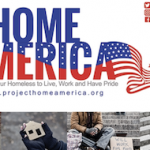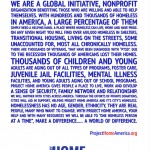Michigan ranks 6th in the entire country for student homelessness.
In Northern Michigan there are 9,467 students suffering from homelessness.
I had the opportunity to talk with one of those students, one of my many questions; “What’s it like looking for a new place to live when you’re a teenager?”
The response came from Gabrielle Long, an 18 year old Cadillac student, she said, “It’s really really hard because most people will look at you and be like ‘Oh you’re 17? Why aren’t you living with your mom?’, I say I can’t.”
Gabrielle has been homeless on and off for five years.
In those five years she’s lived in nine different homes, leaving her very vulnerable.
This is a problem that according to University of Michigan, Poverty Solutions Specialist, Jennifer Erb-Downward, many students are struggling with, “In the state of Michigan there are over 36,000 children in schools who are experiencing homelessness.”
What’s the definition of homelessness that Erb-Downward is describing?
Erb-Downward says, “Under federal law the definition of homelessness for students is any student who lacks a fixed adequate or regular nighttime residence. So that includes students not only who are living in a temporary shelter or on the street, but also students who due to economic hardship or lack of housing are living in a campground, doubled up or couch surfing in someone else’s house.”
Those harmful circumstances overflow into the classroom.
Erb-Downward tells us, “Just 55 percent of homeless students are graduating from high school, and that is compared to an average of 80 percent in the state as a whole”
That rate is the lowest four year graduation rate of any group in Michigan.
Erb-Downward chalks it up to stability, “When you take both a child’s school away from them and their stability at home away from them that is incredibly disruptive it’s a traumatic experience.”
Gabby struggled with attendance and is now set to graduate school a year late, an accomplishment she says she couldn’t do on her own; “My Cadillac Innovation has really really caring staff and it’s like a family there.”
When Gabby refers to staff she’s also specifically referring to Jessica Brown, Gabby’s councilor.
I spoke to Brown who says her and Gabby have a close, personal bond; “I take her to her counseling appointments, I have taken her to the doctor, I have helped her meet her basic needs when she doesn’t have parents to do that.”
Brown and Gabby both agree, there’s one solution that stands out when it comes to helping homeless students in Northern Michigan.
“Something that is really really needed in our community is a youth home,” says Brown.
“Easier housing options would be like my main thing,” agrees Gabby.
Beyond that, homelessness is often not a one-time event.
Meeting consistently with students, and convincing schools to consider some changes are other potential steps to a solution.
Erb-Downward tells me, “If you could bring the people together to figure out why is it the busses are not crossing county lines, what are actually the underlying reasons? that would be something that would be simple to fix, but would have a very large impact on a lot of students.”
Gabby currently lives with her best friend Heather and her parents and plans to pursue art after graduation.
She says, “My goals are to get to college, be successful, and have a family. Those have been my goals since I was a little girl and I need to keep those, because if I don’t I’m just gonna be back where I was, and I don’t want to be there.”
Gabby’s hope is that by being brave and vulnerable enough to share her story, more people will begin listening.
“I want people to look at me and smile and be like, ‘hey this chick is cool, she’s awesome!’,” shares Gabby.







